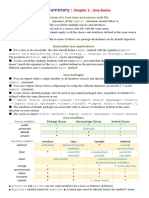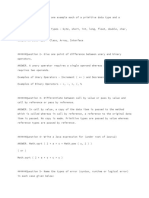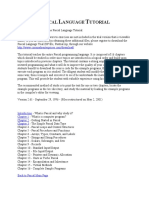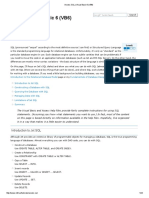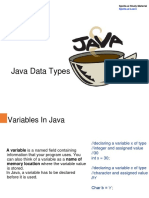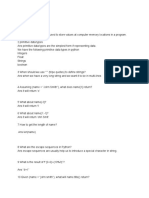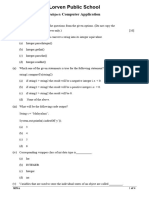0% found this document useful (0 votes)
47 views8 pagesComputer - Library Classes - Quick Revision
The document provides revision notes for Class X Computer Applications covering key topics such as Library Classes, Encapsulation, Inheritance, Arrays, and String Handling. It includes definitions, examples, and explanations of Java concepts like primitive and non-primitive data types, wrapper classes, and various character functions. Additionally, it contains questions and answers to reinforce understanding of these concepts.
Uploaded by
akarshhagarwalCopyright
© © All Rights Reserved
We take content rights seriously. If you suspect this is your content, claim it here.
Available Formats
Download as PDF, TXT or read online on Scribd
0% found this document useful (0 votes)
47 views8 pagesComputer - Library Classes - Quick Revision
The document provides revision notes for Class X Computer Applications covering key topics such as Library Classes, Encapsulation, Inheritance, Arrays, and String Handling. It includes definitions, examples, and explanations of Java concepts like primitive and non-primitive data types, wrapper classes, and various character functions. Additionally, it contains questions and answers to reinforce understanding of these concepts.
Uploaded by
akarshhagarwalCopyright
© © All Rights Reserved
We take content rights seriously. If you suspect this is your content, claim it here.
Available Formats
Download as PDF, TXT or read online on Scribd
/ 8







































